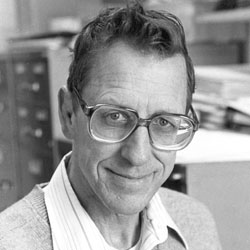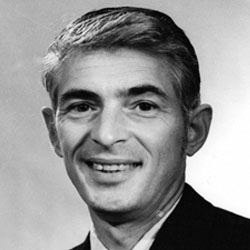
1950-1991 The School of Natural Resources
Following Dana’s lead, the School of Forestry and Conservation became the School of Natural Resources (SNR) in 1950.
The decade of the 1950s was one of growth for the country and the SNR. Increased demand for forest products and wildlife management drove the need for the school to produce graduates capable of meeting the ever-increasing complexities of managing forests and wildlife habitat.
The forest products industry invested millions of dollars in reforestation efforts and forestry research in cooperation with forestry schools, the U.S. Forest Service, and many state forestry agencies. This effort required the expertise of well-trained foresters from the University of Michigan. It was not a surprise that these same foresters rose to leadership positions throughout the United States.
In 1952, the first Master in Wildlife Management and Master of Science in Conservation were conferred, and the first Master of Science in Fisheries was established. The following year, in honor of its 50th anniversary, the school was lauded by U-M for teaching wise management and use of natural resources as an important factor in the nation’s economic and social well-being.
The time is now ripe to replace that school with a still more comprehensive School of Natural Resources which would again be the first of its kind.
SNR recognized that the problems of the day required a broader education and set of skills, and that collaboration with other schools was a significant part of the solution. In 1953, SNR partnered with the business school, and inaugurated a combined program in which SNR students qualified for an MBA with only one additional year of study. A similar collaboration was made with the school of education to broaden the knowledge base of SNR graduates.
Two professors who joined the faculty in 1964 left a lasting impact on generations of students: Burt Barnes, who pioneered an ecosystem approach to landscapes, and Bill Stapp, recognized as the founder of environmental education.
Reflecting the need to continually broaden its educational base, SNR acquired the Department of Landscape Architecture in 1965. During this period, SNR also instituted a naturalist curriculum and expanded its offerings in forest recreation. The latter development resulted in the endowing of the Samuel T. Dana Professorship of Outdoor Recreation.
An abiding love for the outdoors, hard work and camaraderie at Camp Filibert Roth; Burt Barnes’ Woody Plants course; and plaid shirts worn as “formal attire” at the annual Paul Bunyan Ball…these are the memories that alumni from the 1950s and 1960s most often share with us.
Within a few years, Samuel Dana’s vision of a comprehensive program that would achieve widespread acclaim had been realized. Soon, a great many of the major textbooks used as the basis for educating foresters and wildlife managers at schools throughout the United States were authored by SNR professors.
Over my career as a resource manager, first in forestry, then in wildlife, my time with Burt left me with a clear understanding that ecosystems are bigger than the sum of their individual parts and that individual ecosystem components are interdependent… Burt’s mentorship prompted me to devote my life to working in the woods and fields of northern Michigan and to building a career around ecosystem management.
 |
William Stapp (BS ’51, MA ’58, PhD ’64)Bill Stapp, who joined the faculty in 1964, came to be considered as “the founder of environmental education.” He and his students formally developed and published a definition of the emerging field in 1969. Stapp spent his long career searching for the root causes of environmental issues—and helped students and others to find solutions to problems affecting their communities. Stapp’s special interest was international environmental education, and he was the first chief of the United Nations Educational, Scientific and Cultural Organization’s (UNESCO) Environmental Education Section. His environmental education program was the first to be unanimously accepted by all 135 UNESCO member nations. For many years, Stapp cooperated with public school systems in launching environmental monitoring programs in communities throughout the United States, especially in Michigan. He initiated the successful Rouge River recovery project, which involved students from 40 Detroit-area schools. Stapp was recognized with numerous national and international awards and was nominated for the Nobel Prize in 1993. Former student and life-long friend Belle Mickelson (MS ’72) remembers Stapp this way: “Bill not only took us to the wilderness,” she said, “he also took us to city hall. He taught us the importance of working with government to get things done.” |
 |
Burt BarnesDuring his decades on the faculty at U-M, Burt Barnes advised 19 doctoral students and 75 masters students and mentored three generations of academicians, research scientists, and practicing professionals. His two undergraduate courses in Woody Plants and Forest Ecology were taken by more than 6,000 students, and his undergraduate textbook, Forest Ecology (now in its fourth edition), touched countless other students and practicing professionals in North America and beyond. Barnes was a pioneer in bringing a landscape ecosystem approach to the United States and the United States Forest Service (USFS), and his approach to developing hierarchical ecological site classification systems continues to be used by USFS managers all across the country. His book, Michigan Trees, is undoubtedly one of the finest treatments of the natural history of trees on a state level. Barnes’ many awards include the Arthur F. Thurnau Professorship for “outstanding contributions in undergraduate education.” |

